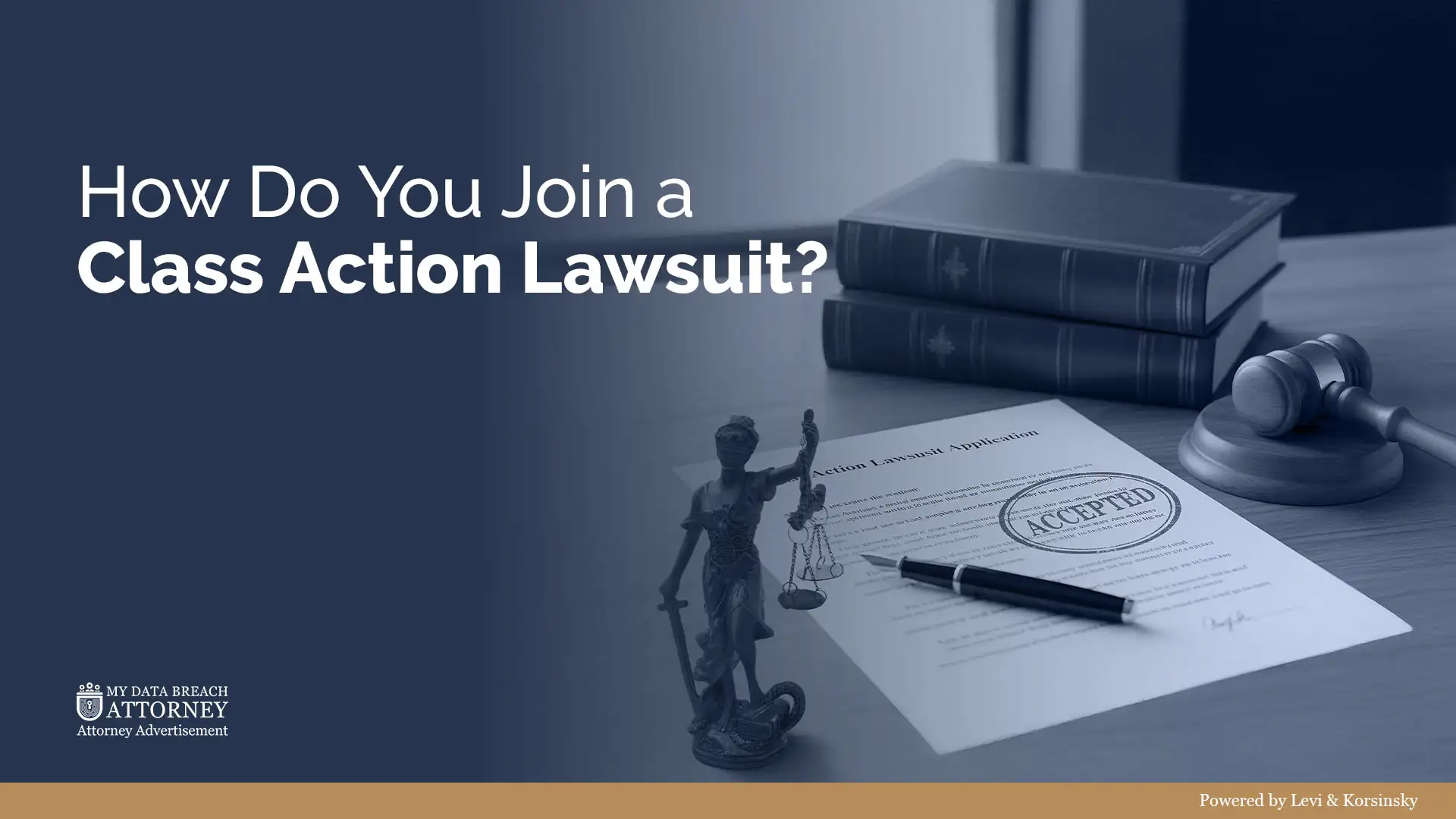That class action notice in your inbox isn’t a check. It’s a ticket, and you have to redeem it too be eligible for compensation.
Discovering you’re part of a lawsuit can feel like finding a winning lottery ticket, only to realize you have no idea how to cash it. You might be confused about what to do next, whether you’re automatically included, or how you actually get compensated. Many people assume the money will arrive automatically, or worse, dismiss these notices as scams.
The truth is , these settlements represent a powerful tool for consumer justice, but the process is subject to important conditions. To receive compensation, you must file a claim. Knowing the specific steps isn’t just helpful, it’s the only way to secure your recovery.
How You Actually “Join” a Class Action
Most class actions operate under an “opt-out” model, meaning inclusion is automatic, not something you actively sign up for at the start. This means that, by receiving a class action notice, you have almost always “joined” the lawsuit automatically.
Here’s a clearer breakdown of what “joining” really means in different scenarios:
1. The Standard (Opt-Out) Process: Automatic Inclusion
- For the vast majority of cases, you are automatically considered a member of the class if you meet the objective criteria defined by the court (e.g., “all U.S. residents who purchased Product X between specific dates”). The lawsuit is filed on your behalf by lead plaintiffs and class counsel. You don’t need to take any action at the filing stage. Your only task is to wait for a notice of settlement and then decide whether to stay in and file a claim or opt out.
2. The Less Common (Opt-In) Process: Active Participation
- A smaller subset of cases, particularly some under the Fair Labor Standards Act (FLSA) for wage disputes, operate under an “opt-in” model. In these, receiving a notice does not make you a plaintiff. You must actively consent in writing to formally join the lawsuit and be bound by its outcome. The notice will provide explicit instructions on how to do this.
3. Proactive Involvement: Becoming a Lead Plaintiff
- If you haven’t received a notice but have suffered significant harm from the same issue, you can proactively join by contacting the law firm handling the case or one that specializes in class actions. With substantial damages, you may even be considered to serve as a lead plaintiff, the named representative for the entire class. This role involves more active participation but also provides a greater voice in the litigation strategy and settlement negotiations.
The most important thing to understand is that for most class actions in the United States, you don’t need to actively “sign up” at the beginning. These are “opt-out” class actions, meaning you are automatically included as a member if you fit the class definition (e.g., you were a customer of the company during a specific time, your data was breached in a particular incident, or you owned a defective product).
The lawsuit is filed on your behalf by lead plaintiffs and their attorneys. Your role isn’t to fight the legal battle; it’s to decide what to do when the battle is over.
The Step-by-Step Process to Claim Your Compensation
Your journey from class member to receiving compensation typically follows four phases.
Phase 1: Determine Your Eligibility and Receive Notice
You will first learn you are a class member through an official notice. This is typically sent by mail or email but can also be published in newspapers or online if class members are difficult to locate directly.
This notice is your most important document. It will clearly define:
- The Case: The name of the lawsuit, the defendant, and the alleged wrongdoing.
- The Class Definition: The exact criteria for who is included (e.g., “All U.S. residents who purchased Product X between January 2020 and December 2023”).
- Your Rights: Your options to stay in the class, exclude yourself (opt out), or object to the settlement.
- The Claim Process: How to file for your portion of the settlement and the critical deadline for doing so.
Action Step: Read any notice you receive thoroughly. If you hear about a settlement but didn’t get a notice, search online for the official settlement website (e.g., [CompanyName]Settlement.com) to check your eligibility.
Phase 2: Understand Your Three Options
Once you receive a notice, you have three choices:
- Do Nothing (Remain in the Class): This is the default. By taking no action, you remain in the class. You will be bound by the final settlement or judgment and give up your right to sue the defendant individually for this same claim. Important: You will NOT receive payment unless you later file a claim form.
- Opt Out: You can formally exclude yourself from the class by following the instructions in the notice before the deadline. This means you will not get any benefits from this settlement, but you retain your right to file your own individual lawsuit against the defendant. This might be the right course of action if you have suffered greater damages than is typical of the class, but you should always consult with a qualified attorney to be able to make an informed decision about your individual case. Learn more about Class Action vs. Individual Lawsuit here.
- Object: You can stay in the class but formally write to the court to explain why you believe the settlement is unfair. You will still be able to file a claim if the settlement is approved.
For most people, remaining in the class and filing a claim is the correct path.
Phase 3: File Your Claim to Get Paid
To actually receive compensation, you must file a claim form. Settlement funds are not distributed automatically.
- Find the Form: Use the URL or address provided in your official notice or on the settlement administrator’s official website.
- Provide Required Information: This almost always includes your name, address, and a unique identifier from your notice. You may need to provide proof, like a proof of purchase or the email address associated with the breached account. How much and what kind of proof varies from settlement to settlement, or even across different compensation categories within the same settlement. All parts of a claim form are important but pay special attention here.
- Choose Payment Method: Select how you want to be paid from available options on the form (e.g., electronic transfer, mailed check, or a prepaid debit card).
- Meet the Deadline: The Claim Deadline is absolute. The court will not accept late submissions. Mark this date on your calendar.
Phase 4: Wait for Processing and Payment
After you submit your claim, patience is key.
- The settlement must receive final approval from a judge, which involves a fairness hearing. This can take many months.
- Once approved, the settlement administrator must process all the thousands (or millions) of claims.
- If your claim form was filled out properly and on time, y
You will eventually receive your compensation via your chosen method. This can be a cash payment, a credit monitoring service, or another form of relief defined by the settlement.
This entire process can take a year or more from the claim deadline to payment.
What Compensation Can You Expect?
Compensation varies widely depending on the settlement size, the number of people who file claims, and the nature of the harm.
- Cash Payments: These can range from very small amounts (e.g., $10-$50) to larger sums for those who provided proof of significant losses.
- Credit Monitoring: Common in data breach settlements, this provides a valuable service to protect your identity going forward.
- Rebates or Coupons: Some consumer product settlements may offer discounts on future purchases.
- Cy Pres Awards: Sometimes, if funds remain, money is donated to a non-profit organization related to the harm caused.
Frequently Asked Questions (FAQs)
It is very likely that Yyou don’t need to actively “join.” If your data was compromised in a breach, you’re automatically included if you fit the class definition. To claim compensation, you must file a claim form before the deadline. Your only other option is to opt-out, which forfeits your payment but preserves your right to sue individually. You can check some of our active cases that you can join such as the Retina Group of Florida data breach, College Hometown Pharmacy data breach, or view our full list of active data breach cases to see if your information was compromised in a recent incident.
Yes. Receiving a notice is the strongest indicator that the breached entity has identified you as a potential class member whose data was exposed. You are likely eligible to file a claim for compensation. For more details, see our guide on data breach lawsuit eligibility.
Unfortunately, claim deadlines are strictly enforced by courts. If you missed it, you likely forfeit your right to that settlement’s compensation. However, we can review your case to determine if your damages are significant enough to warrant filing an individual lawsuit. Contact us for a consultation to explore your options.
Individual cases are, by definition, specific to you. You should consult a qualified attorney for advice on your own unique situation and legal rights. For most victims of a data breach, remaining in a class action is often the best choice. It requires no upfront cost from you and is efficient for recovering modest damages for which an individual lawsuit would be impractical.
Often, yes. Many data breach settlements compensate for the invasion of privacy and the time spent protecting your identity, not just direct financial losses. You may be eligible for a flat-rate payment, reimbursement for time spent, or free credit monitoring services, even without out-of-pocket losses.
Yes, there are two critical deadlines. The first is the deadline to opt-out or object to the settlement. The second is the claim deadline to file for compensation. This date is absolute and will be listed in your notice and on the official settlement website.
Typically, you only need your name, address, and the unique ID number from your notice. Some claims for higher reimbursement may require proof of out-of-pocket losses or time spent. The official claim form will specify exactly what is needed.
It often takes a year or more from the claim deadline. The settlement must first receive final court approval, which involves a fairness hearing. The administrator then processes all claims before distributing payments. This lengthy process ensures the settlement is fair.
Usually, yes. Most data breach class actions are national in scope. The class definition often includes all U.S. residents affected by the incident. In some class actions, however, class members from specific states might also be members of a “subclass” based on state of residence. Membership in a subclass could mean you are eligible for additional or special relief in addition to what is offered to the class as a whole. As always, read your notice carefully for details.
Compensation can include cash payments for documented losses, reimbursement for time spent (often at an hourly rate), and several years of free credit monitoring and identity theft protection services. Learn more about potential compensation in a data breach lawsuit.








